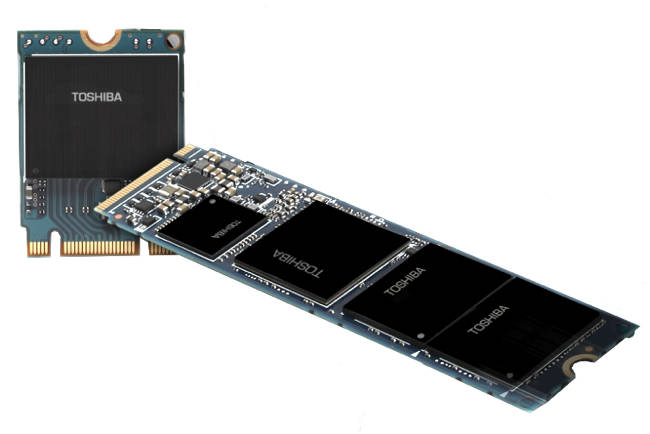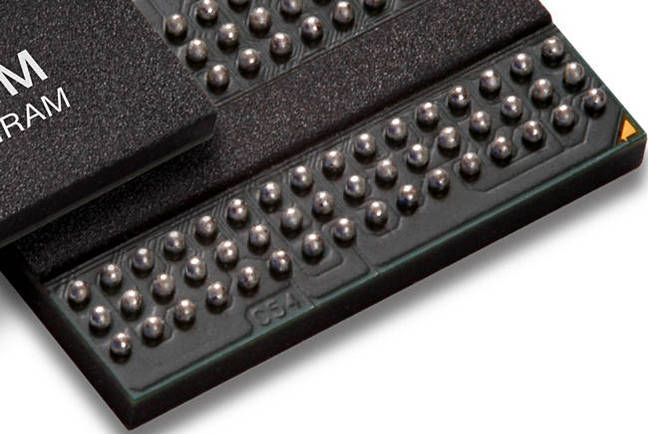This article is more than 1 year old
Ballsup helps Toshiba double tablet SSD capacity
Into the third tablet solid state dimension with ballsy BiCS chippery
Toshiba has produced a tiny but bigger SSD for tablets and ultrathins by adding TLC 3D NAND to its BG1 SSD card product line, and doubling its capacity.
The BG1 was introduced in August 2015 as a 256GB NVMe M.2 product. This product had an edge connector and was inserted into a socket.
The actual chip was affixed to the M.2 card by solder, using a ball grid array (BGA). This is a pattern or grid of spherical solder balls on its under-surface, which are used to interconnect chip connectors to points on the parent card.
These replace previously used pins, which can distort and have electrical disadvantages, such as higher inductance, when compared with BGA fixing.
Toshiba introduced its first single package NVMe BG-series chip in January 2015. It had 128GB or 256GB capacity using 19nm Toshiba MLC (2bits/cell) flash, an on-chip controller and PCIe 3.0 interface driven by NVMe. It was this BGA package that was used on the M.2 BG1 SSD, and its dimensions were 16mm x 20mm, the same as the latest BG product.
We’re told this is a surface area that's 95 per cent smaller than Toshiba's 2.5-inch SATA storage devices and 82 per cent smaller than M.2 Type 22806 packages.

Toshiba’s BG1 is the small edge-connector card on the left
With TLC (3bits/cell) 3D NAND, using Toshiba’s BiCS technology, the BG chip’s capacity doubles to 512GB. We assume it uses 48-layer BiCS. We have no performance - IOPS or bandwidth - or endurance information, although the lucky OEMs are getting that kind of data.
It’s available in 128GB, 256GB or 512GB capacities, and is delivered in either a 16mm x 20mm package (M.2 Type 1620) or a removable (socketed) M.2 Type 2230 module.
The device uses a PCIe gen 3 x2 interface and implements an NVMe standard Host Memory Buffer (HMB) feature. This allocates and employs host DRAM for flash management purposes instead of in-package DRAM. Lookup data is stored in host memory to lower access times for commonly accessed data.

Everspin MRAM chip showing grids of solder balls for fixing
The BG 3D NAND SSD is being targeted at OEMs making tablets, ultra-thins and convertible 2-in-1 notebook products.
Samples are available for limited PC OEM customers. They’ll be available for other customers in the fourth 2016 quarter. Visitors to the 2016 Flash Memory Summit held in Santa Clara, California between August 8 and 11 can see the little beauty and talk balls with Tosh stand staff. ®
